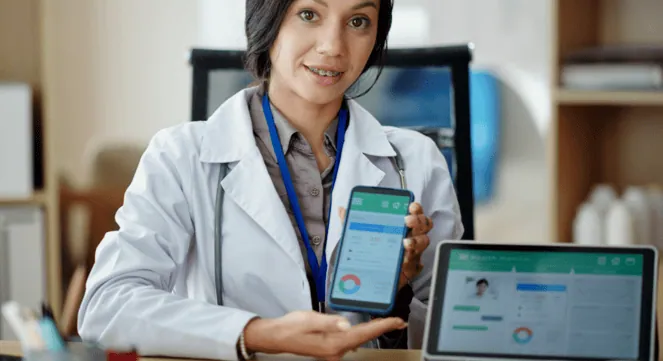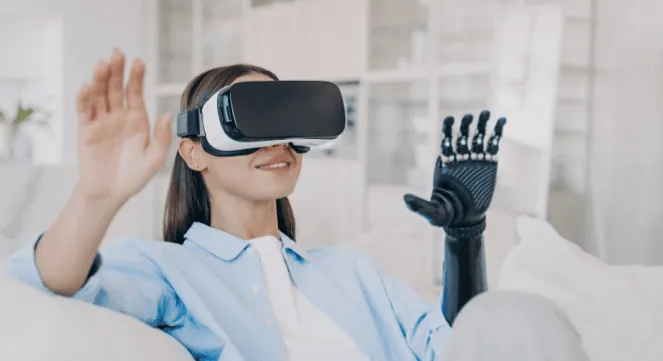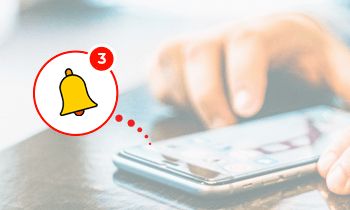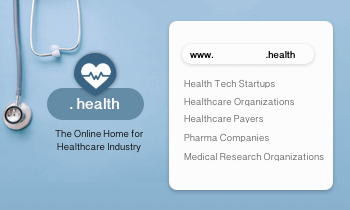“Make something people want”, that’s the only way to survive in this competitive era. Why do we build products? Foremost approach or let’s say primary approach of building the product is to solve the problem of customers and in return they pay us for that product and we do business, Simple!
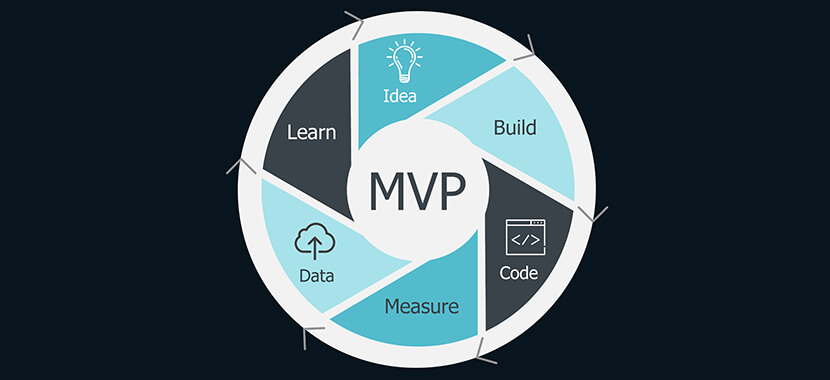
But how do you know that product you are about to make will be used or is needed by people out there. Here, Minimum Viable Product (MVP) comes to your rescue and allows you to test your idea by exposing early version of the product to target audience to collect relevant data. The golden rule of an MVP is: Less is more; keeping it simple you can make sure it is strong enough.
The idea of Minimum Viable Product is to develop version of new product or website with just enough features to satisfy early adopters and this allows you and the team to get maximum amount of validated learning with the least effort. The final product is only designed after getting the feedback form the initial users of the product.
What MVP can do for you?
Test your assumptions:
MVP helps to test your idea and its validity. When you assume something it is not necessary that it will be true. The MVP is the best way to test your assumption.
For example, Airbnb, a home rental startup tested their assumption that people would rent a space in a home or apartment. They created a simple website with the picture of space in apartment with three air-mattresses on floor and also offered home-cooked breakfast in morning and they received their first three renters. Within one week they started receiving emails from people asking for same arrangement in other places.
Get real-time data about the product:
When you go out with the MVP in market, you will receive customers’ feedback. Response or feedback from the target customers can save your product. Getting direct response from your customers is like getting real-time data.
Buffer, for example, an app to schedule posts across social network begin with the simple test. They created a landing page which showed how it will work, encouraged people to sign up and offered plans and pricing then they used these email address to start conversation and gain feedback.
Allows for the evolution of product:

Product evolution refers to product development and product designing. MVP helps you in product evolution i.e. changes in design and development, serving the same function.
For example, Apple’s first generation iPod was introduced in 2001, since then competition has increased and to survive in the market and fulfill customer demand there has been further development in the product.
Reduce money and time spent on product development:
If you directly go on for making a final product and if there is difference in what you have made and what customers actually want then you have wasted both your time and money. Releasing an MVP will tell you where you need to focus and put your time and money.
For example, Unsplash, a photography website that offer high-resolution photos with the concept of downloading 10 new free stock photos every 10 days. Rather than spending time creating a new website Crew, a freelancer developers and designers’ community, created an MVP for Unsplash using a $19 Tumblr blog theme. Within 3 hours the first version was ready and running. To test if there was any demand for such a product, Unsplash was submitted on Hacker News and within few hours of posting Unsplash 20,000 photos were downloaded.
It helps you raise funds for your startup:

When you build an MVP and generate some sort of user base, you prove that there is a need of the product and funding your idea will be worthwhile. Instead of an example it will be better to know what are the things investor look for in an MVP before making investment decision: How much traction your MVP has, does your MVP solves significant problem, User-engagement level of your MVP, Growth trends in terms of both sales and user count of MVP and feedback from actual users of your MVP.
Success Stories
Groupon: From blog to a billion-dollar company
Groupon launched in November 2008 is an ecommerce site offering activities, goods and services, travel connecting millions of people to the local merchants.
Andrew Mason first launched website called ‘The Point’, to bring people together to accomplish things that they couldn’t do alone. It didn’t get much traction and was a failed venture.
Now they had an idea of coming up with something where group of people can buy same product to receive a group discount. So with the same domain they came up with a blog and begin posting deals each day manually. Groupon’s first deal was half price offer for pizza for the restaurant on the first floor of their building.
The idea of group buying worked! and soon Groupon grew from a blog to a billion-dollar company.
They didn’t invest in making new website, instead they just played around with the resources available and made MVP out of that to test hypothesis of people in what they were offering. Even the coupons were offered in a PDF file with Apple mail. Here what they did was, before making a full-fledged product, they first went out to the customers with the offer to grab customer attention and to know if customers will be interested in such a product.
Lesson learnt: Test market before you start making product
Dropbox: Made video to sell an idea
Dropbox launched in June 2007, is a file hosting service, where user can create special folder on their computers with Dropbox.
Drew Houston use to repeatedly forget his USB drive while studying at Massachusetts Institute of Technology (MIT). So he began developing something for himself that will help him with this problem and soon realized it can benefit others too. But the question here was will customers will use and pay for the file sync solution? To get the answer for this question it was important to get out and go in front of actual users to get feedback.
Houston and his team decided to try something new to get customer feedback. They made a simple explainer video and started sharing it. A three-minute video demonstrates technology in the way it works. Houston narrated the video personally. This resulted in more visitors to the website. Soon the signup went from 5000 people to 75000 people overnight.
Without even making an actual product Dropbox was able to increase its customer base with help of a three-minute video.
Lesson learnt: Put something in hand of user before making an actual product to get the feedback (that something does not necessarily be coded or final product)
Zappos: Started with the dummy site
Zappos was founded in 1999 by Nick Swinmurn, it is an online shoes and apparel store.
Nick wanted to build an online retail shoe store. He started putting actual pictures of shoes that he took from local stores. When someone ordered shoes online, Nick visited the shop and physically purchased the shoes.
Nick tested his hypothesis by going online and advertising shoes with picture. The shoes were not manufactured by him nor were in the stock. Nick use to photograph at the regular stores after tie-up with the store owner. On receiving an order, he use to go himself and buy shoes from the store.
Here Nick charged the customer for manually providing the service, the only difference is that customer does not see any manual work being done. This was done just to know if there was enough demand for online shopping of shoes, to start a business.
Lesson Learnt: Doing things manually and in some cases not profitable just to validate your assumptions with very little investment. This enables you to ship/deliver and test faster.
Pebble Watch: Collected revenue before launching
Pebble Watch is an e-paper smartwatch. Eric Migicovsky wanted to make a watch that could display messages from smartphone and other Android devices. The watch was simply meant to show and allow user to decide whether to take out their mobile in response. Eric went out with his idea, but the company failed to attract traditional investors, two major problems were, the product was interesting but Eric was having difficult time explaining it to the investors and the second problem was his first plan was to integrate watch with BlackBerry smartphones and not the popular ones such as Apple iOS or Google’s Android, hence it didn’t attracted investors.
Eric turned to Kickstarter for crowdfunding, he produced a short video that explained everything about Pebble smartwatch. With the video Eric started answering peoples’ questions. Pebble built an unproven and novel device with minimal funding by having customer pre-pay through use of Kickstarter. Pebble build a prototype with limited features that targeted needs and expectations of the target users, video, took photos and designed a Kickstarter page. And finally everything was put in such a way that they had a product with the explanation on how it worked. The campaign ran from April to May 2012 and was able to raise more than $10 million.
This was one of the highest-earning Kickstarter campaign. Raising funds from the customers to support product development.
Lesson Learnt: Keep it simple and easy to use with limited features.
Our process of building MVP
Usually it takes around 8-12 weeks of time to build MVP. How we do it? Here is the process we follow to build our MVP. Maybe this can help you too, if you still thinking on where to begin…
To better understand the process let’s say you have an idea and you are planning to build an Ecommerce website to sell T-shirts.
The first thing you need to do is
1. Workshop(s) with the stakeholders to
- Understand the product objective:You need to understand what your product does, or what kind of problem it solves. Define your main goal to satisfy the customers. Here, you can say your primary goal is to sell T-shirts online.
- Brainstorm:It’s an activity where you and your team need to find a solution for specific problem. You find out the that people are looking for individual, customized T-shirt, so you get an idea and decide to allow users to receive individual, customized T-shirt.
- Competition Analysis:It is to understand strength and weakness of current and potential competitors. Suppose there are some online stores who sell customized T-shirt, here you need to find what are they offering and what are the things they are missing on. This will create an opportunity for you to focus on the difference you can make by offering the same product.
- SWOT Analysis:Strength, Weakness, Opportunity and Threat (SWOT) Analysis. In order to get your idea on the right track evaluate these four elements for your product.
Strength: what are the characteristics of your product that gives you advantage over others
Weakness: What could you improve or avoid, what factors will lose you sale, what people will likely see as the weakness in your product.
Opportunity: Spot the opportunities for you in the market, what interesting trend you can bring. Look at your strength and find out if these can offer any opportunity and what opportunities will you get by eliminating your weakness
Threats: What obstacles you can face, what your competitor is doing, if you have any cash-flow problems, are there any changes in technology.
- User/customer validation:Find out who are your target customers. In case of your online customized T-shirt shop, you can target youngsters, companies or events as they can demand for T-shirts with the company or event logo on it.
- Identify the must haves to create the MVP:Some of the must have things you should focus on while creating the MVP are Determining characteristics of people who will use your product: Find out who will be the people using your product the most, what are the facilities they will be looking for on your website or app.
List down the important things customer will be looking for: The next thing is to see how customer will be using your product, how will they capture value from it. For example, User would like to make or create his own design to be printed on the T-shirt, in this case you will have to provide section or feature to make their own designs. How will you offer an awesome user experience: In case of your online T-shirt website, you need to focus on the navigation part. To offer an awesome user experience, the look, feel and the flow of the screens will matter a lot.
Make it simple to get started: The first-time user will not know much about your website; you need to show them what is it all about. In case of your customized T-shirt online shop you can guide users with the help of video tutorial, offer an easy signup process, ask for their feedback.
- Understand the Go to market strategy:Go to market strategy is somewhat similar to your business plan. Define your target market and benefit for intended customers, decide on how will you reach your target customers. Get out with the strong promotion plan with help of effective marketing channels.
- Business model and monetizationBusiness model and monetization are closely related. Your business model should be such that successfully generates revenue. Generally online services use model that combine payment made by customer on buying or subscribing and ad revenue.
2. Technical Analysis
- Identify AcceleratorsFactors or people that help to grow your business. Accelerators turn your ideas into product prototypes. Accelerators include investors who provide initial funding for the business. They also provide you expertise and help you build business relationships to grow your business.
- Identify technical challenges (if any) See if there are any technical challenges and what you can do to tackle them. You should include people with different set of skills in your development team to handle different technical issues.
- Feasibility analysisIt is to determine whether to proceed with the project idea or not. If you discover early that business idea will not work, then this will save your time, money and other investments done towards the project. In case of an online store you need to determine its technical feasibility, cost feasibility and if it will be profitable.
- Proof of ConceptProof of Concept evaluates how the proposed product will support business goals. It will help you to identify technical and logistical issues. For the online T-shirt store you will need to provide proof of concept that the product will be accepted by people and it will be able to generate revenue.
- Evaluate platforms/technologies/toolsIf you are planning an online T-shirt store, you will need to decide on the software platform that will be easy-to-use and inexpensive, keep an eye on latest technologies and tools to be used. The platform or technology you choose to build your online store should also be secured.
3. Blueprints and Prototypes
- Identify user personaIdentifying user persona is to understand needs of your customers. Persona identifies user’s goals, motivations and expectations. You need to see what is the goal of your customer, what will motivate him/her to come to your website or application, and what will they expect from your store, also see to it if your online store will be able to fulfil customers’ expectations.
- Identify the use cases and feature flow (mind map)Mind map technique will help you to identify your use cases and feature flow. Mind map is created around single center concept and major ideas are connected to the center concept and related ideas branch out from major ideas. For example, in case of an online T-shirt store, T-shirt will be your center concept and ideas like Niche, design, quality, brand, cost, market will be some major ideas around it, and the related ideas will branch out from these major ideas.
- Prepare the wireframesYou need to present skeletal framework of your online T-shirt store, this will make it easier to plan the layout of your website and placement of the elements in order of their importance. It’s just like making a screen blueprint.
- Prepare Pixel perfect visual mockupsVisual Mockups show how the final prototype or product will look like. It’s like final outline before the development process so this will include types of colors for your online store, typography including font style and size. Mockups are usually used as design tools for new product.
4. Functional Specification document
- A document that details the use cases, prototype findings, technology decisions and high level architectureIt is document for software developers that describes product’s capabilities, appearance and interactions with user. Functional Specification document shows or clarify on what software needs to do to support the product or service.
- Implementation roadmap, milestones and planningMilestone represents achievement of some sort and roadmap is simple presentation of project goals alongside a timeline. Milestone-based thinking can help you achieve your target in the roadmap along with the specific date mentioned in the roadmap.
5. MVP Development
- Development environment setupA development environment is a set of software that enables you to develop programs for particular language or platform. It includes text editor, shell and compiler. It is important to setup development environment as you’ll have everything in place to build your software.
- Develop, test builds with intermediate milestonesYour milestones should be in service of the overall project. Intermediate Milestones can include progress reports, trailers, presentations, functional prototype and final project draft. These things get the clear idea if you are on the right track. Milestones will also help you in receiving feedback from beta testing and help publicize your work to the greater audience.
- Intermediate releases to get feedback from stakeholdersIn Intermediate release you can receive early feedback from stakeholders. This kind of feedback will help you to determine if the product features are meeting their expectations.
- Functional, integration and usability testingWith these type of testing you can test the ease with which user-interface can be used and it determines if product is user-friendly. Functionality testing verifies if software application is working correctly according to design specifications.
- Analytics integrationAnalytics integration passes data to your analytics platform. It allows you to send data to the platform in question form, so you can see how each variation is affected such as visit duration and bounce rate. There are various analytics integration platforms such as Google Analytics, Adobe Analytics, KISSmetrics, Mixpanel etc.
6. Launch (beta release)
The Beta phase of the software is feature complete but includes number of known and unknown bugs. But before or during Beta release of the product you need to accomplish few task below.
- Pre-Launch checklistMake your pre-launch checklist. Before launching the website or an application you need to look at few things such as
- Will user understand purpose of the website or an app?
- Is the user-flow smooth?
- Do you have search option on website or application?
- How fast your website loads?
- Are there any broken links that lead to nowhere?
- Is your site mobile friendly?
- Are your icons and words on the site placed correctly?
- Will your site integrate well with social media?
Look at the design and overall navigation of the website.
- Deploy on productionSoftware deployment is making software system available for users. Before deploying on production you need to stop setup changes, stop staging environment i.e. testing the product after development but before production, If you modified anything during development process then you need to change testing settings to the production value, Lock users out of website or application you used during testing, so that no changes occur during deployment process.
- Marketplace submission (if it is Mobile app)Marketplace is a place where product is available for users to purchase and download. You can publish your app on marketplace such as Google Apps Marketplace or Firefox Marketplace.
- Go-live Before going live or launching your product make sure that you have done all your research, testing is done properly, content is in place. Once these things are done then you can Go-live without any worries.
- Monitor and supportYour work does not end with launching your product. In order to keep the website or an application running, you need to monitor and support it. For example, Monitor traffic, send emails to existing users, see if any new features are to be added or is there a need to change any existing feature for better performance.
Types of MVP strategies
Explainer Video: It is an informative video, usually 2-3 minutes long. These videos demonstrate how your product will be useful to the customers. One of the examples is that of Dropbox, they made a 3-minute video as an MVP that demonstrated how it works and this resulted in increase in sign up from 5000 to 75000 people overnight.
Wizard of OZ MVP: A Wizard of OZ MVP is when you put up something that looks like real working product but actually all the product functions are done manually. ZeroCater, a food catering company started with Wizard of OZ MVP, it started with the big spreadsheet to connect companies with restaurants that would cater. Now they have a software that helps them run their business, but in earlier days they did it manually by maintaining a spreadsheet.
A Landing Page: A landing page is a web page or first page of your website. Landing page can be used to test the product. For example, Buffer, an app that lets you schedule your post across your social networks. Buffer’s founder did a simple test by creating a simple landing page, it explained how Buffer worked, had a sign up option, offered plans and price tab for people to go through it if they were interested. Gaining valuable feedback, Buffer started creating product features.
Concierge MVP: It is similar to Wizard of OZ MVP; the only difference is that you’re upfront about the manual work being done. For example, Rent and Runway, an online service that provides designer dress and accessory on rent. Rent and Runway tested its hypothesis by providing an in-person service, where female college students can try the dress on before renting. This test validated its hypothesis that women would rent dresses.
Piecemeal MVP: It is the mix of Wizard of OZ and Concierge MVP. It is to put together functioning demo of the product using existing tools and services. Groupon is one of the best example of Piecemeal MVP, to test the hypothesis it created a blog, when someone would sign for particular deal, team would generate PDF document and email it using Apple mail, here they didn’t waste time in developing coupons and website, instead they used what was already there.
Single Featured MVP: Single-featured MVP are best as they just focus on one feature that is most important, it saves time and make it easy to use the product. Foursquare for example was based on single featured MVP concept. It is a local search and discovery mobile app or in simple terms, ultimate city guide in your pocket. It began with simple idea of letting user check-in to the social network with their location and also offered gamification rewards, once users were comfortable with the basic feature, Foursquare started adding extra features.
Digital prototypes: Digital prototype is where developers and designers can visualize real-world performance of the product and also reduces reliance on costly physical prototypes. Levate, a product development company to help disabled people through innovative solutions. Levate, currently have an image of a wheelchair which is a beta product, but it looks, act and feel much like the final product. They have also posted a video demonstrating on how the product works. They have created a tab ‘Get Involved’ where, they have asked people to subscribe and contribute towards product development.
MVP example
How Instagram started?
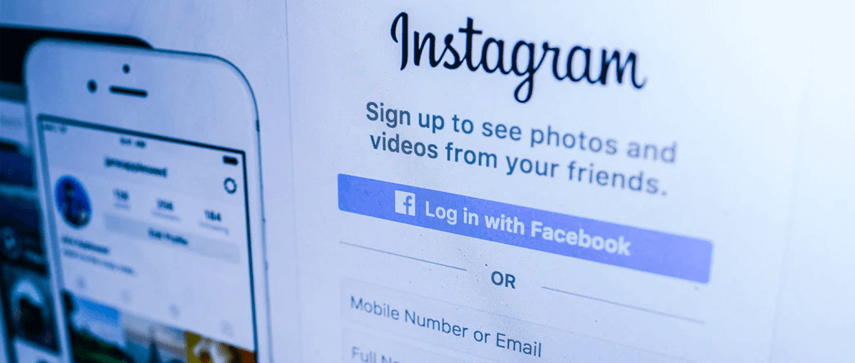
Two years of work resulted in a billion-dollar company
Kevin Systrom, a Stanford university graduate and a big photography fan, was working with Nextstop in 2009. Before joining Nextstop, Systrom was working with Google. However, Nextstop was later acquired by Facebook in 2010.
While working with Nextstop, Systrom learned to code and he built an HTML5 prototype called as Burbn, (he named it after his favorite liquor) a multi-faceted app that allowed users to check-in, post plans and share photos. At that time photo sharing was very popular feature.
In March 2010, Systrom met two venture capitalists at the party of Hunch, a startup based in Silicon Valley.
At the party Systrom showed the prototype of Burbn to these venture capitalists, after seeing a prototype they decided to meet Systrom to discuss further about it. After their first meeting Systrom decided to quit his job and focus on Burbn, within two weeks he was able to raise $500,000 as a seed-funding from venture capitalists he met at the party.
Systrom was joined by Mike Krieger, another Stanford graduate. After Krieger joined, the two decided to focus on just one thing and be the best at that.
They decided to just focus on mobile photos and started learning about the leading app in the photo category.
They found that Hipstamatic app was very popular as it had some interesting feature such filters to add to the photos, but the only thing they found was lacking was the social capabilities in the app.
Systrom and Krieger found the opportunity in this and decided to come up with the product that have some social elements in it.
They decided to again work on the prototype and changed everything in Burbn except its photo, comment and like capabilities. When all the changes were made the end result they got was ‘Instagram’.
They renamed Burbn to Instagram because the name resembled with what was there in the app. Instagram was made combining the words Instant and telegram.
They started working on Instagram, improving photo-sharing experience. After eight weeks working on it they offered it to their friends for beta testing, after the test they fixed the bugs and finally on Wednesday, October 6, 2010 Instagram was launched.
Instagram become an instant hit since the day it was launched. With this it grabbed attention of many investors and leading companies in social media like Facebook and Twitter.
In 2012 Facebook acquired Instagram for $1 billion. According to the Monthly Active User count, by 2015 there were around 400 million users of Instagram.
The above story of Instagram shows us that how just building a product prototype can result in a better and successful product. Taking an idea to a prototype and then towards a final product is the way it should be done.
From above examples and case studies it is clear that building MVP makes some sense. But your MVP can also fail if you didn’t stay focused on it.
MVP can fail if:
- Product is not good enough- if you are solving wrong problem, you overbuild it and launch late.
- Customer failure- Not finding early adopters, no idea on user acquisition and if your product is solving only your problem and not customers.
- Failing in the Market- Not pricing correctly, if you don’t consider an alternative solution and if some parts of your product are really expensive to operate
- Failing to choose the right team- Lack of expertise, only words and no actions and if you team have different goals and direction.Building great product and more importantly to build what people want will always be a challenge. Just start and try to focus on building that’s good enough to get you some feedback.
If pictures can say thousand words, then just imagine what your prototype can do. Create rough model, explain your concept to the people, see if they like it or find it useful, get their feedback, make changes and focus on building the final product.
Author’s Bio

Nitin Lahoti is the Co-Founder and Director at Mobisoft Infotech. He has 10+ years of experience in Design, Business Development and Startups. His expertise is in Product Ideation, UX/UI design, Startup consulting and mentoring. He prefers business readings and loves traveling. Follow him @nitinlahoti





